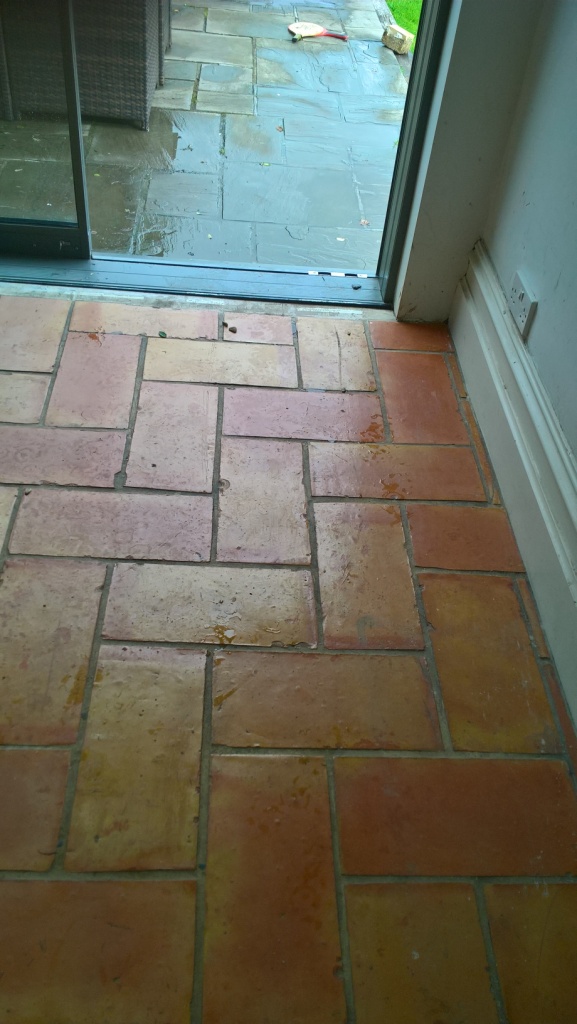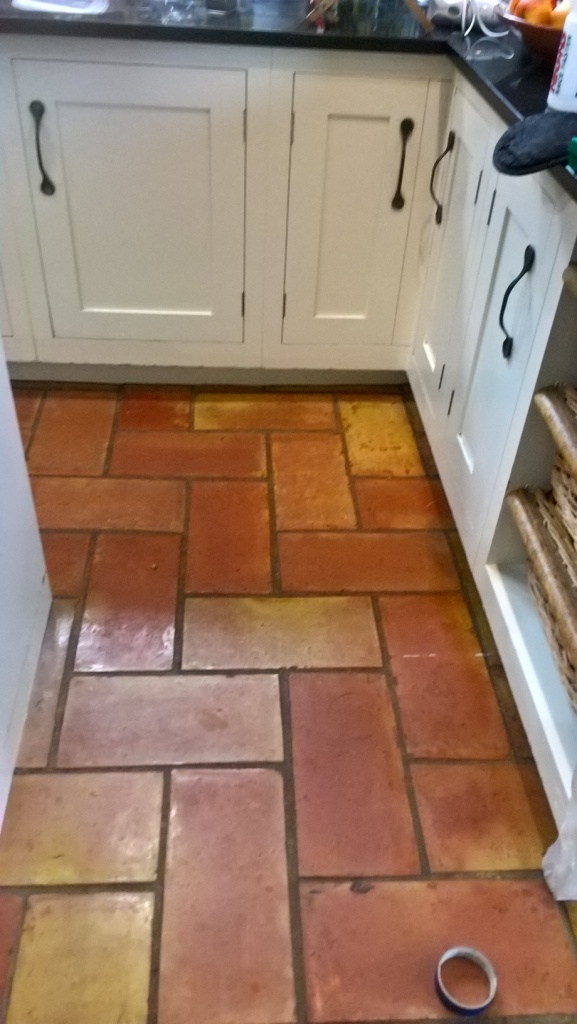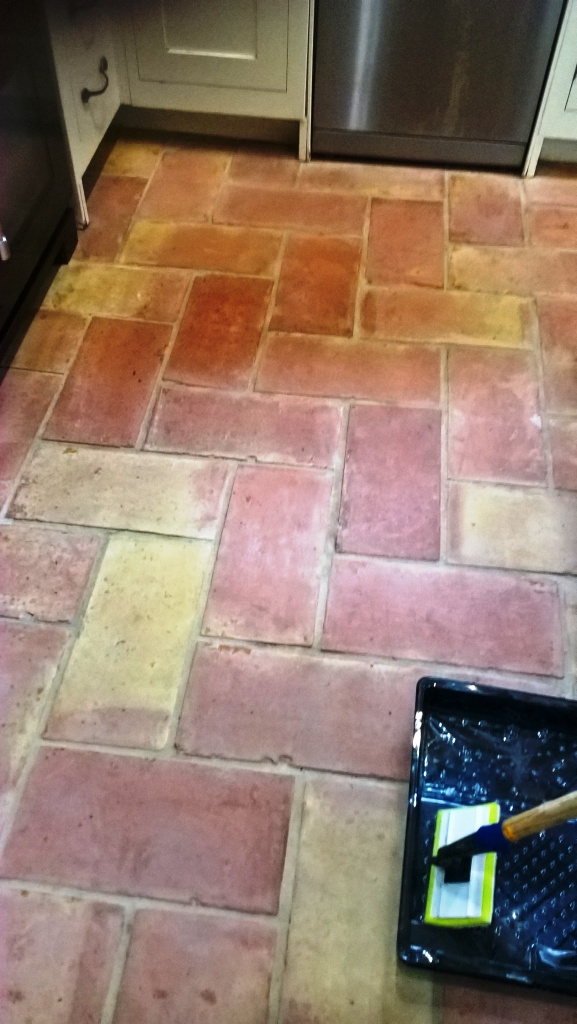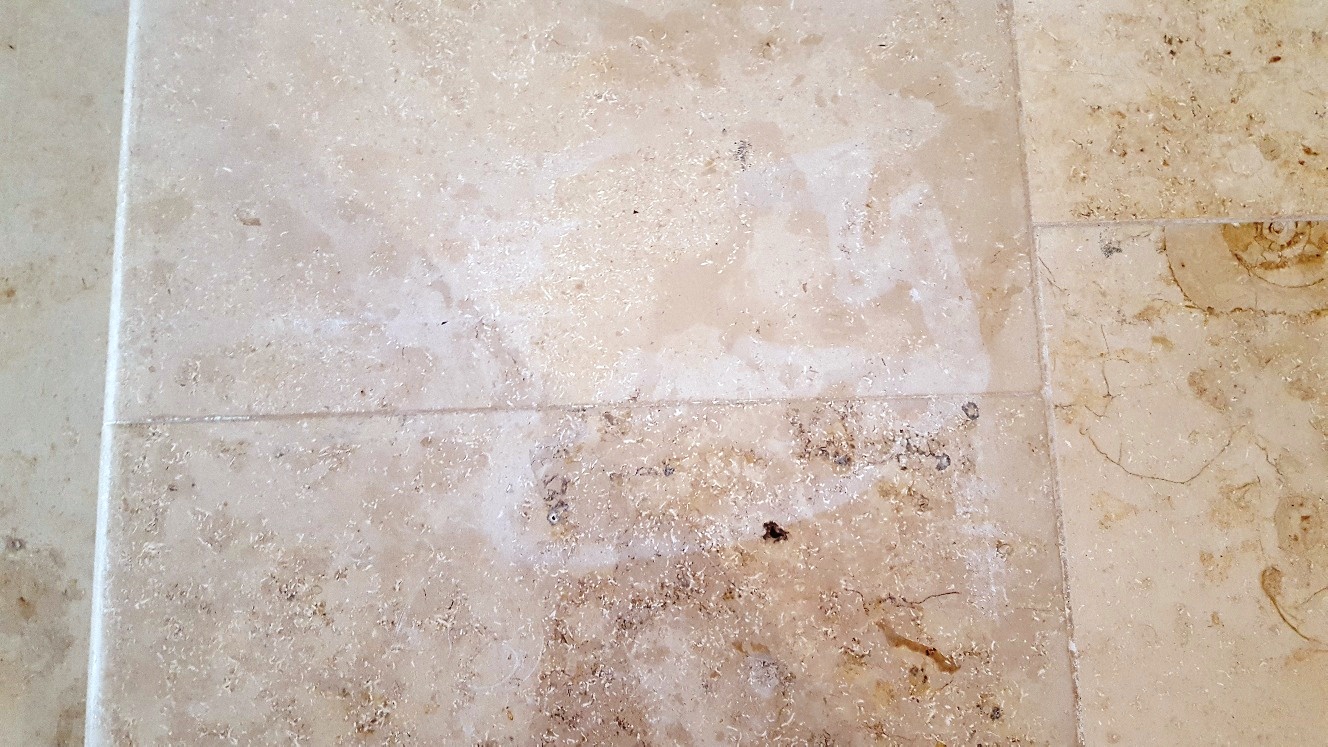I’m based in Eastbourne, so it was no trouble to go around and take a look. I popped round and in my profession you never know when they might come in handy so I bought them off her for £20 which was a bargain really. Well I was very grateful to her and after seeing her front pathway and garden I offered to clean the paving and tiles up for free.
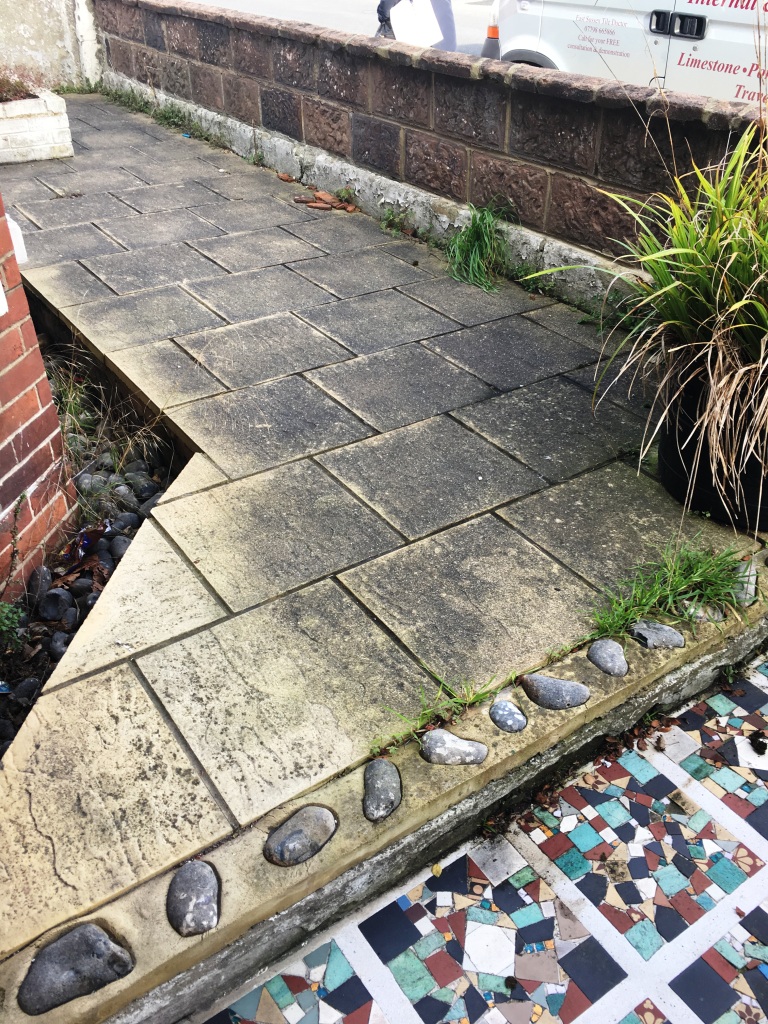 |
 |
There were two sections of paving that needed cleaning including the mosaic tiles and with my van being parked right in front of the house I was able to reach them with my van mounted high-pressure cleaning system.
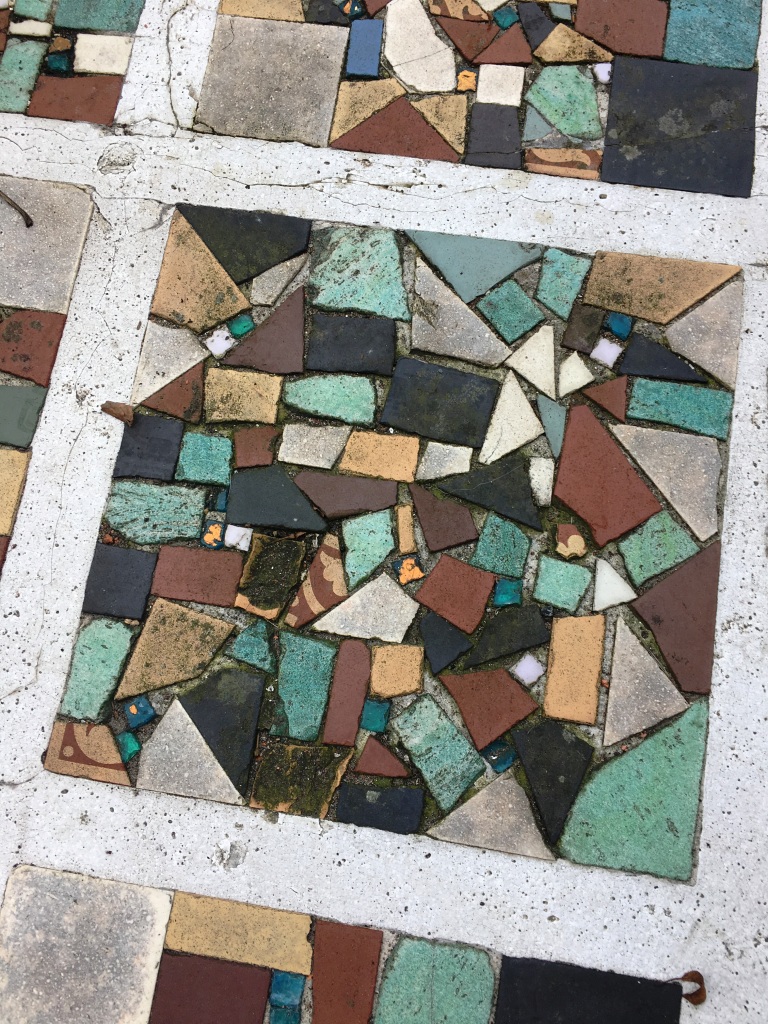
Cleaning Dirty Paving
The first job was to use low pressure jet wash to the paving to remove surface dirt and then apply a medium dilution of Tile Doctor Pro-Clean and let it soak into the tile for about ten minutes. The solution was then scrubbed into the tile using a stiff brush to release the ingrained dirt.The last step was to finish the process using our high-powered state of the art truck mount extraction system. These machines are a big investment but well worth the cost in the amount of time they save. They work by applying hot water under pressure to the surface via a special spinner tool whilst simultaneously extracting the soiled water back to a collection tank on the van. You can set the pressure of the machine and in the case of paving I use a lower pressure to ensure the mortar between the paving isn’t dislodged.
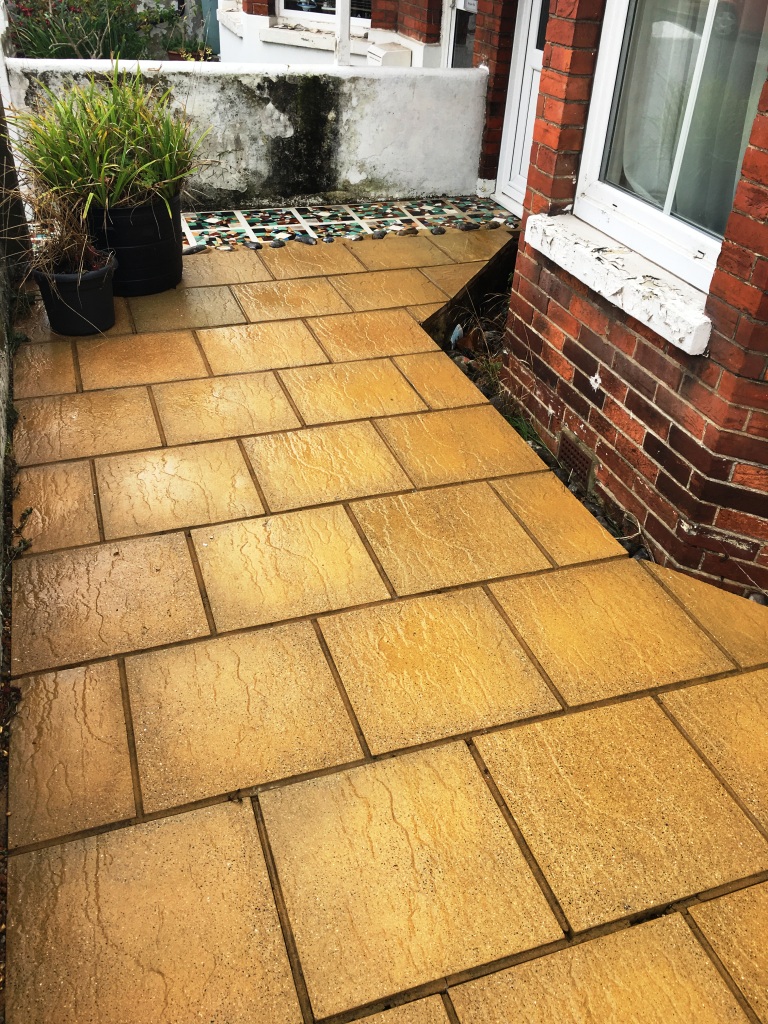 |
 |
The paving came out remarkably well as you can see from the photographs.
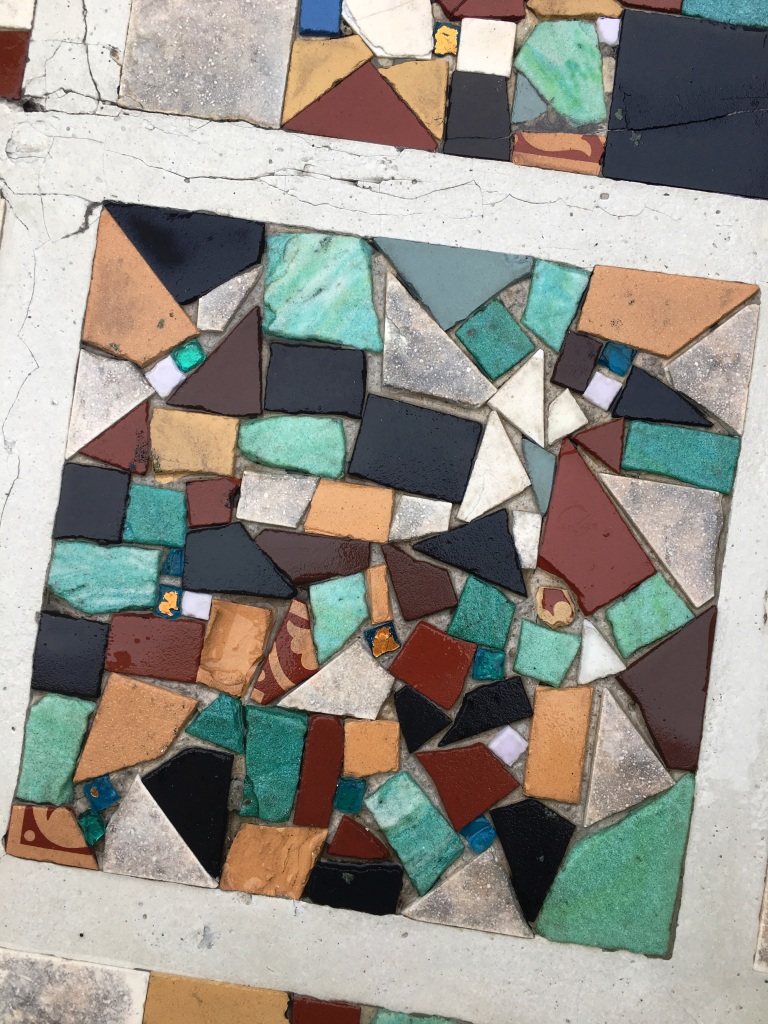
Thank you Joy for your enthusiasm in the finished product, for the opportunity to reveal your lovely pathway, for the buckets of tiles you recovered and for the copious amounts of tea you served to me.
Source: Pavement and Patio Tile Cleaning and Renovation Service in East Sussex



